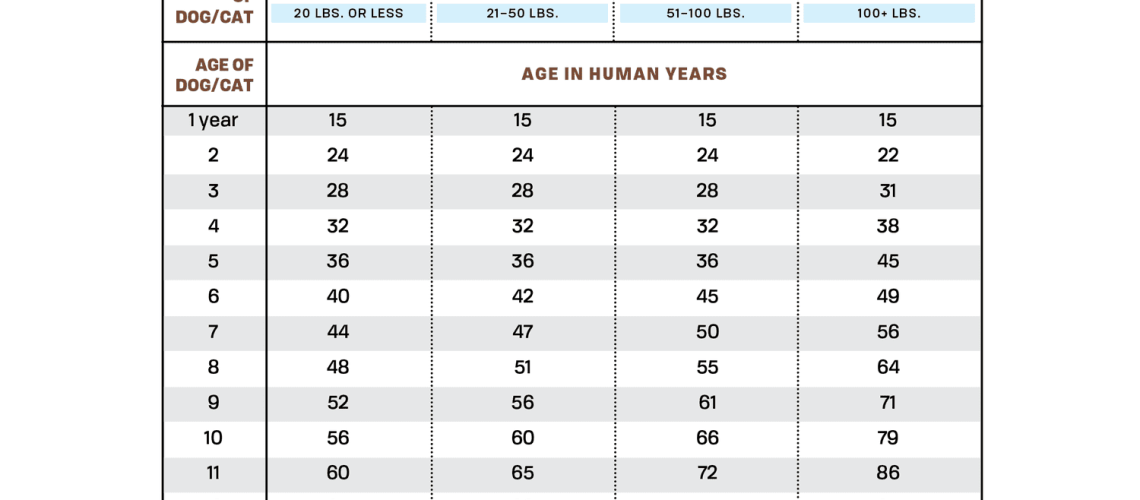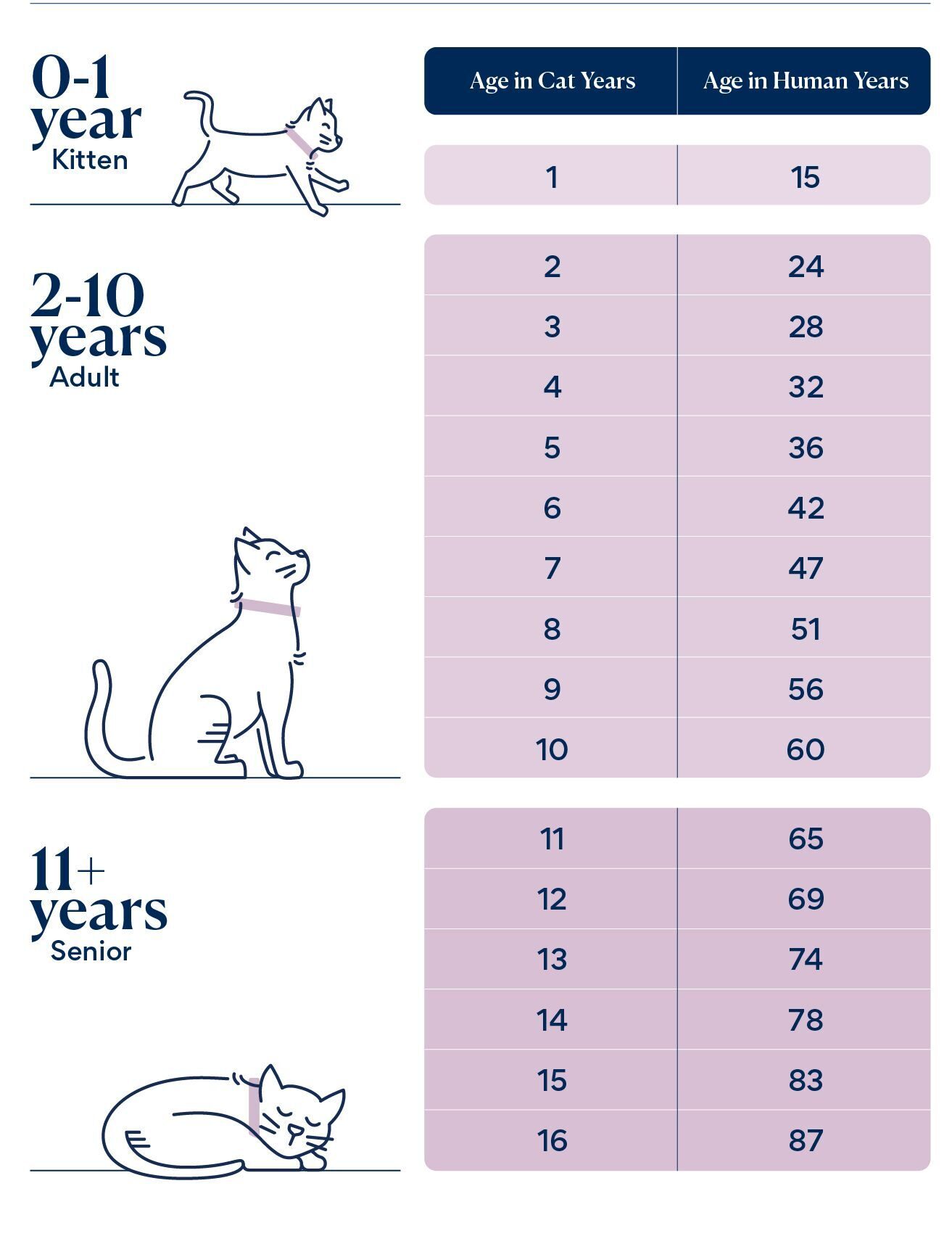Have you ever wondered how old your dog is in human years? Discover the fascinating correlation between dog and human age with our simple guide.
Key Takeaways:
- The common belief that one dog year is equivalent to seven human years is not accurate.
- A dog's age can be determined by multiplying the natural logarithm of their age in years by 16 and adding 31.
- Small breeds tend to live longer than large breeds, so their aging process is slower.
- Dogs reach adulthood at different rates depending on their breed and size.
- Regular veterinary check-ups are essential for monitoring a dog's health and adjusting their care as they age.
How to Determine Your Dog's Age in Human Years
Understanding the Aging Process of Dogs
Have you ever wondered how old your furry friend is in human years? While dogs age faster than humans, it can be helpful to know their age in human years to better understand their needs. Determining your dog's age in human years is not as simple as multiplying their age by seven. The aging process of dogs varies depending on factors such as breed and size.
To determine your dog's age in human years, you need to consider their life stages. Just like humans, dogs go through different phases of life: puppyhood, adolescence, adulthood, and senior years. Each stage has its own characteristics and requires specific care. By knowing your dog's age in human years, you can provide them with appropriate care and make informed decisions about their health.
The Importance of Knowing Your Dog's Age
Knowing your dog's age in human years is crucial for several reasons. Firstly, it helps you understand which life stage they are at and what kind of care they require. Puppies have different nutritional needs compared to adult or senior dogs. Understanding their age also allows you to monitor any signs of aging-related health issues that may arise.
Secondly, knowing your dog's age can help you bond with them better. As dogs progress through different life stages, their behavior and energy levels change. By understanding their age, you can tailor activities and playtime accordingly to ensure they are happy and healthy.
Comparing the Lifespan of Dogs and Humans: What You Need to Know
Dogs vs Humans: Lifespan Differences
Dogs have shorter lifespans compared to humans due to various biological factors. On average, dogs live between 10 to 13 years, while humans can live well into their 70s, 80s, or even longer. This means that dogs age at a faster rate than humans.
While it may seem unfair that our furry friends have shorter lives, it's essential to remember that dogs experience life differently. They pack a lot of love and joy into their shorter lifespans and bring happiness to our lives every day.
Factors Affecting Dog Lifespan
The lifespan of a dog can vary depending on several factors:
- Breed: Different dog breeds have different average lifespans. Smaller breeds tend to live longer than larger breeds. For example, small breeds like Chihuahuas can live up to 15 years or more, while larger breeds like Great Danes have an average lifespan of around 7-10 years.
- Genetics: Just like humans, genetics play a role in determining a dog's lifespan. Some dogs may be more prone to certain health conditions or genetic disorders that can affect their lifespan.
- Diet and Exercise: Providing your dog with a balanced diet and regular exercise can contribute to their overall health and potentially extend their lifespan.
- Veterinary Care: Regular veterinary check-ups and preventive care are essential for maintaining your dog's health and detecting any potential issues early on.
Do All Dog Breeds Age at the Same Rate as Humans?
Aging Disparities Among Dog Breeds
No, all dog breeds do not age at the same rate as humans. While it is commonly believed that one dog year is equal to seven human years, this is not entirely accurate. The aging process varies depending on the breed and size of the dog.
Smaller breeds tend to have longer lifespans and slower aging rates compared to larger breeds. This means that a small dog may not reach senior status until around 10-12 years old, while a large breed dog may become a senior as early as 6-7 years old. It's important to consider these differences when determining your dog's age in human years.
Different Aging Rates: Small vs Large Breeds
The size of a dog can significantly impact their aging rate. Small breeds generally live longer than large breeds. For example, a small breed like a Yorkshire Terrier may live up to 15 years or more, while a large breed like a Saint Bernard may only live for around 8-10 years.
This difference in aging rates is due to various factors such as genetics, metabolism, and growth patterns. Smaller dogs mature faster and age more slowly, while larger dogs experience rapid growth during their puppyhood and adolescence stages but tend to age faster overall.
A Simple Formula to Calculate Your Dog's Age in Human Years
The Seven-Year Rule: Myth or Reality?
You may have heard the common belief that one dog year is equivalent to seven human years. However, this rule is not entirely accurate. Dogs do not age at a consistent rate throughout their lives.
A more accurate way to calculate your dog's age in human years is by using the following formula:
```
Human Age = 16 * ln(Dog Age) + 31
```
In this formula, "ln" stands for the natural logarithm function. Don't worry if it sounds complicated; you don't need to do any calculations yourself! There are online calculators available that can determine your dog's age in human years with just a few clicks.
Using the Formula: An Example
Let's say your dog is 5 years old. Using the formula, you can calculate their approximate age in human years:
```
Human Age = 16 * ln(5) + 31
≈ 36.6
```
So, if your dog is 5 years old, their age in human years would be around 36.6. Remember that this is just an estimate, as individual dogs may age at slightly different rates.
Factors That Influence How Dogs Age Compared to Humans
Breed-Specific Factors
The breed of a dog plays a significant role in how they age compared to humans. Different breeds have different genetic makeups and predispositions to certain health conditions, which can affect their overall aging process.
For example, some small breeds like Dachshunds are prone to back problems as they get older, while larger breeds like Labrador Retrievers may be more susceptible to joint issues such as hip dysplasia. Understanding these breed-specific factors can help you anticipate and address any potential health concerns as your dog ages.
Lifestyle and Environmental Factors
The lifestyle and environment in which a dog lives also impact how they age compared to humans. Dogs that receive proper nutrition, regular exercise, and mental stimulation tend to lead healthier lives and may age more gracefully.
On the other hand, factors such as obesity, lack of exercise, exposure to toxins or pollutants, and stress can accelerate the aging process in dogs. Providing a safe and enriching environment for your furry friend can contribute to their overall well-being and longevity.
Is One Dog Year Really Equal to Seven Human Years? Let's Find Out!
The Myth of the Seven-Year Rule
While many people believe that one dog year is equal to seven human years, this is not entirely accurate. The seven-year rule is a simplified way of estimating a dog's age in human years, but it doesn't consider the varying rates at which dogs age throughout their lives.
As mentioned earlier, smaller breeds tend to live longer and age more slowly than larger breeds. Additionally, puppies and young dogs mature much faster than humans do during their early years. Therefore, it's important to use a more precise method, such as the formula mentioned earlier, to determine your dog's age in human years.
Aging Curve: Dogs vs Humans
The aging curve for dogs differs from that of humans. Dogs experience rapid growth and development during their first few years of life, reaching adulthood much sooner than humans. After reaching adulthood, the aging process slows down for some time before accelerating again in their senior years.
In contrast, humans have a more gradual progression through childhood, adolescence, and adulthood before experiencing noticeable changes associated with old age. This difference in aging curves further highlights why the one-to-seven ratio is an oversimplification when comparing dog and human ages.
How Understanding Your Dog's Age in Human Years Helps with Their Health and Care
Age-Appropriate Care
Knowing your dog's age in human years allows you to provide them with appropriate care at each stage of their life. Puppies require special attention to ensure proper growth and development, while senior dogs may need additional support for joint health or managing chronic conditions.
By understanding your dog's age in human years and being aware of the specific needs associated with each life stage, you can tailor their diet, exercise routine, and veterinary care accordingly. This proactive approach to their health can contribute to a longer and happier life for your beloved companion.
Monitoring Health Changes
As dogs age, they become more susceptible to certain health conditions, just like humans. By knowing your dog's age in human years, you can be vigilant about monitoring any changes in their behavior or physical condition that may indicate underlying health issues.
Regular check-ups with a veterinarian become even more important as your dog gets older. They can help detect and manage age-related conditions such as arthritis, dental problems, vision or hearing loss, and organ dysfunction. Early detection and intervention can make a significant difference in maintaining your dog's quality of life.
How Knowing Your Dog's Age in Human Years Impacts Their Diet, Exercise, and Medical Needs
Dietary Considerations
Your dog's nutritional needs change as they age. Puppies require diets that support proper growth and development, while senior dogs may benefit from specialized diets that address age-related issues such as joint health or weight management.
Knowing your dog's age in human years allows you to choose an appropriate diet for their specific life stage. Consult with your veterinarian to determine the best food options and feeding schedule for your furry friend.
Exercise Requirements
The amount and type of exercise your dog needs also vary depending on their age. Puppies have boundless energy and require frequent playtime and short walks to burn off excess energy. Adult dogs benefit from regular exercise routines that keep them physically fit.
As dogs enter their senior years, their exercise requirements may decrease due to decreased mobility or joint discomfort. However, it is still important to provide them with low-impact activities that promote muscle strength and mental stimulation. Understanding your dog's age in human years helps you adjust their exercise routine to suit their changing needs.
Medical Care Needs
Regular veterinary care is essential throughout a dog's life, but the frequency and focus of check-ups may vary depending on their age. Puppies require vaccinations, deworming, and more frequent visits to monitor their growth and development.
Adult dogs benefit from annual wellness exams, dental cleanings, and preventive measures such as flea and tick control. Senior dogs may require more frequent check-ups to monitor any age-related health issues or adjust medications if necessary.
Knowing your dog's age in human years enables you to plan for appropriate medical care at each life stage, ensuring that they receive the necessary treatments and interventions to maintain optimal health.
How Knowing Your Dog's Age in Human Years Impacts Their Diet, Exercise, and Medical Needs
Diet
Knowing your dog's age in human years is crucial when it comes to their diet. Puppies have different nutritional needs compared to adult dogs or senior dogs. A puppy's diet should consist of high-quality puppy food that provides the necessary nutrients for growth and development. As they transition into adulthood, their dietary requirements change, and it is important to switch them to an appropriate adult dog food. Senior dogs may require a specialized diet that caters to their aging bodies, such as food formulated for joint health or lower calorie content. By understanding your dog's age in human years, you can ensure they receive the right nutrition at each stage of their life.
Exercise
The age of your dog in human years also influences their exercise needs. Puppies are full of energy and require regular playtime and exercise to burn off excess energy and stimulate proper muscle and bone development. Adult dogs typically have more endurance and can engage in longer walks or more intense physical activities. However, as dogs enter their senior years, their exercise requirements may decrease due to decreased mobility or joint issues. It is important to adjust the intensity and duration of exercise based on your dog's age to prevent overexertion or strain on their bodies.
Medical Needs
Understanding your dog's age in human years is essential for addressing their medical needs effectively. Puppies require a series of vaccinations and regular vet check-ups to ensure they are protected against common diseases and parasites. Adult dogs may need routine preventive care such as annual vaccinations, dental cleanings, and heartworm prevention medication. Senior dogs often develop age-related conditions like arthritis or dental problems that require special attention from veterinarians. Regular check-ups become even more critical during this stage to catch any health issues early on. By knowing your dog's age in human years, you can stay proactive in providing appropriate medical care and ensuring their overall well-being.
Key considerations:
- Consult with your veterinarian to determine the best diet for your dog based on their age in human years.
- Adjust the intensity and duration of exercise according to your dog's age to prevent injuries or strain.
- Stay up-to-date with vaccinations and regular vet check-ups to address any medical needs specific to your dog's age group.
| Dog's Age | Human Age |
|---|---|
| 1 year | 15 years |
| 2 years | 24 years |
| 3 years | 28 years |
| 4 years | 32 years |
Remember, this is just an approximate conversion and varies based on breed and size. Treat your dog with love and care regardless of their age!















